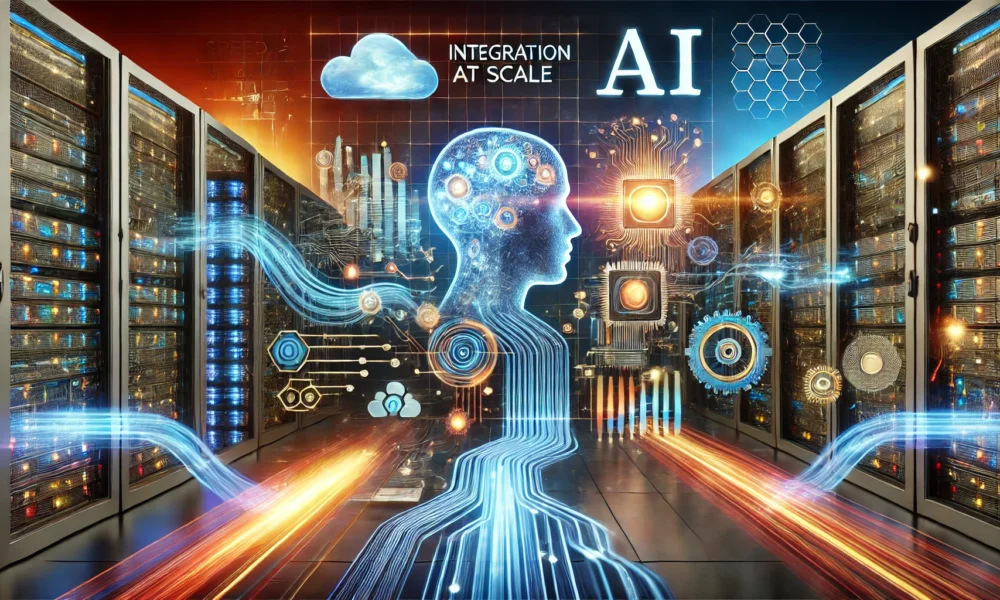Unlocking the Potential of AI in CRM Platforms
Embracing the digital age means prioritizing customer experience, with hyper-personalization setting the new standard.
Almost every company now offers a digital product, aiming to provide a seamless customer journey at every touchpoint.
CRM platforms play a crucial role in managing customer service needs efficiently. Modern CRM systems have integrated artificial intelligence (AI) to enhance their functionalities.
Recent Customer Behavior Statistics reveal that 91% of companies are utilizing AI in their CRM systems, with 42% already implementing AI in their CRM strategy.
This article explores how AI is transforming CRM platforms and why its adoption is essential.
The Evolution of CRM with AI
With customer expectations soaring, personalized experiences at every touchpoint are non-negotiable. However, managing and acting on the increasing amount of data poses a significant challenge.
AI integrated into CRM platforms addresses these data-related complexities. By analyzing vast amounts of data in real-time, AI predicts customer needs, enhancing overall business operations and fostering stronger customer connections.
Traditional CRMs have limitations in data gathering and managing external workflows, providing insights based on manually integrated and adjusted data.
In contrast, AI-powered CRMs are quicker, offering actionable insights based on real-time data. The result is more accurate data collection, leading to improved customer information and streamlined operations.
5 Ways AI is Revolutionizing CRM
AI integration in CRM systems is a game-changer for enhancing customer engagement and retention, with companies using AI-driven tools witnessing a 29% increase in sales.
Here are key ways AI is transforming customer relationship platforms:
1. Personalized Customer Experience
AI-powered CRMs offer deep customer insights, using predictive analytics to forecast customer behavior. By suggesting personalized customer recommendations based on preferences, intelligent CRMs enable targeted sales and marketing efforts.
2. Automation of Routine Tasks
AI CRMs automate routine tasks such as customer behavior analysis, data entry, and follow-up emails. This saves time, allowing teams to focus on strategic planning and innovation. With real-time interactions and automated responses, companies can enhance efficiency and boost sales and customer satisfaction.
3. Enhanced Analytics
AI in CRM platforms elevates analytics by harnessing ML and NLP techniques to collect and analyze data from varied sources. This enables businesses to optimize marketing campaigns, delve into business metrics, and strategize for proactive customer service.
4. Better Sentiment Analysis
AI-based CRMs prioritize sentiment analysis, using NLP to assess customer tone, urgency, and intent. This plays a crucial role in enhancing customer services, as seen in tools such as Zoho CRM’s AI assistant, Zia, which prioritizes negative customer feedback for swift resolution.
5. Continuous Improvement
AI-based CRMs continuously learn from large datasets, refining customer retention strategies based on real-time data ingestion. By leveraging ML algorithms, organizations can enhance processes and drive ongoing improvements in CRM.
Challenges in Adopting AI in CRM
While AI integration in CRM offers new possibilities, it also presents challenges that organizations must navigate for optimal performance.
Key challenges include data privacy and governance, data quality and integration, and training and resource enablement.
The Future of AI in CRM
Today, AI-powered CRMs deliver hyper-personalized solutions in real-time, anticipating customer needs through predictive analytics. Teams can expedite trend identification, issue resolution, and sales optimization with AI systems.
Stay updated on the latest AI trends by visiting unite.ai.
-
What is AI in CRM and how is it transforming customer experience?
AI in CRM refers to the use of artificial intelligence technology within a customer relationship management system to enhance customer interactions and business processes. It is transforming customer experience by providing personalized recommendations, automating repetitive tasks, predicting customer behavior, and improving overall efficiency. -
How can AI in CRM provide personalized recommendations to customers?
AI in CRM can analyze customer data, such as past interactions, purchase history, and browsing behavior, to generate personalized product recommendations. This helps businesses tailor their offerings to individual customer preferences, leading to higher engagement and satisfaction. -
In what ways does AI in CRM automate repetitive tasks for businesses?
AI in CRM can automate repetitive tasks such as data entry, lead scoring, and email responses. By leveraging machine learning algorithms, AI can streamline these processes, freeing up time for sales and customer service teams to focus on more strategic activities and improving productivity. -
How does AI in CRM predict customer behavior?
AI in CRM uses advanced analytics and predictive modeling to analyze customer data and forecast future behavior. By identifying patterns and trends, AI can predict customer preferences, purchasing patterns, and churn risk, allowing businesses to proactively address customer needs and optimize their strategies. - How does AI in CRM improve overall efficiency for businesses?
AI in CRM enables businesses to automate routine tasks, personalize customer interactions, and make data-driven decisions, leading to increased efficiency and productivity. By leveraging AI technology, businesses can streamline processes, reduce manual errors, and deliver a superior customer experience, ultimately driving growth and profitability.









